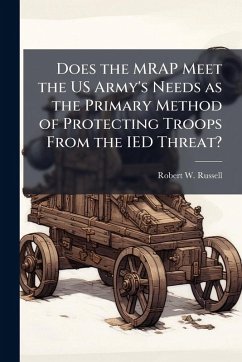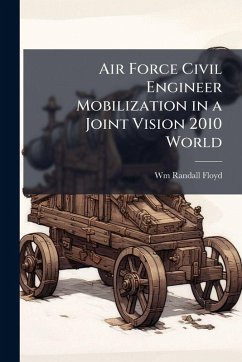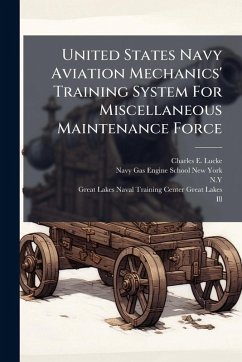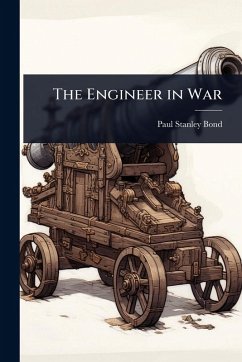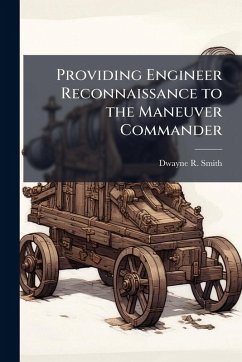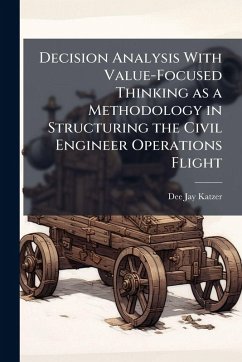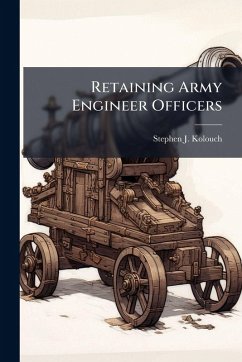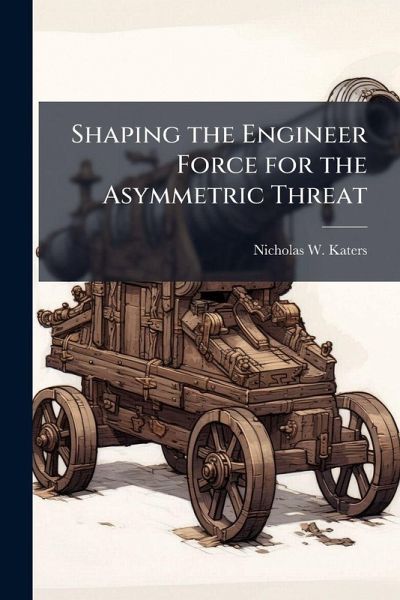
Shaping the Engineer Force for the Asymmetric Threat
Versandkostenfrei!
Versandfertig in über 4 Wochen
15,99 €
inkl. MwSt.
Weitere Ausgaben:

PAYBACK Punkte
8 °P sammeln!
This monograph looks at the current state of the divisional engineer capability in both the heavy and light U.S. Army divisions. Its intent is to determine whether or not the divisional engineers are sufficiently capable of dealing with the challenges of the emerging asymmetric environment. The central theme behind this investigation is to investigate how world has changed since the end of the cold war and whether or not Army Engineers are reacting to the changes. The loss of the global bipolar environment has given way to a new era of increased instability and the emergence of dangerous asymm...
This monograph looks at the current state of the divisional engineer capability in both the heavy and light U.S. Army divisions. Its intent is to determine whether or not the divisional engineers are sufficiently capable of dealing with the challenges of the emerging asymmetric environment. The central theme behind this investigation is to investigate how world has changed since the end of the cold war and whether or not Army Engineers are reacting to the changes. The loss of the global bipolar environment has given way to a new era of increased instability and the emergence of dangerous asymmetric threats. The Army has begun the process of adapting to the new environment thru a long term Transformation process that will eventually yield the Objective Force. Unfortunately, it will be several years before that force is ready to be used and the current force must be ready to counter real world threats. The methodology for this paper began with an investigation of the new asymmetric environment. The Contemporary Operational Environment (COE) was chosen as the best model to compare engineer capabilities to. Divisional engineer capabilities were compared to several key principals that an asymmetric foe will likely use and a prioritized list of shortfalls was developed. The investigation looked at possible solutions to the shortfalls through reliance on echelon above division (EAD) augmentation and the new force developments embodied in the Force XXI concept and the Interim Force concept. The solutions suggested by EAD augmentation and force modernization both proved inadequate to overcome the shortfalls. The temporary solution to engineer shortfalls lies with a reorganization of engineer structure within the heavy and light "legacy" divisions. This reorganization calls for the inclusion of several engineer capabilities that are not currently resident in the division structure. The most significant of these are the addition of a modest general engineering capability and This work has been selected by scholars as being culturally important, and is part of the knowledge base of civilization as we know it. This work was reproduced from the original artifact, and remains as true to the original work as possible. Therefore, you will see the original copyright references, library stamps (as most of these works have been housed in our most important libraries around the world), and other notations in the work. This work is in the public domain in the United States of America, and possibly other nations. Within the United States, you may freely copy and distribute this work, as no entity (individual or corporate) has a copyright on the body of the work. As a reproduction of a historical artifact, this work may contain missing or blurred pages, poor pictures, errant marks, etc. Scholars believe, and we concur, that this work is important enough to be preserved, reproduced, and made generally available to the public. We appreciate your support of the preservation process, and thank you for being an important part of keeping this knowledge alive and relevant.



